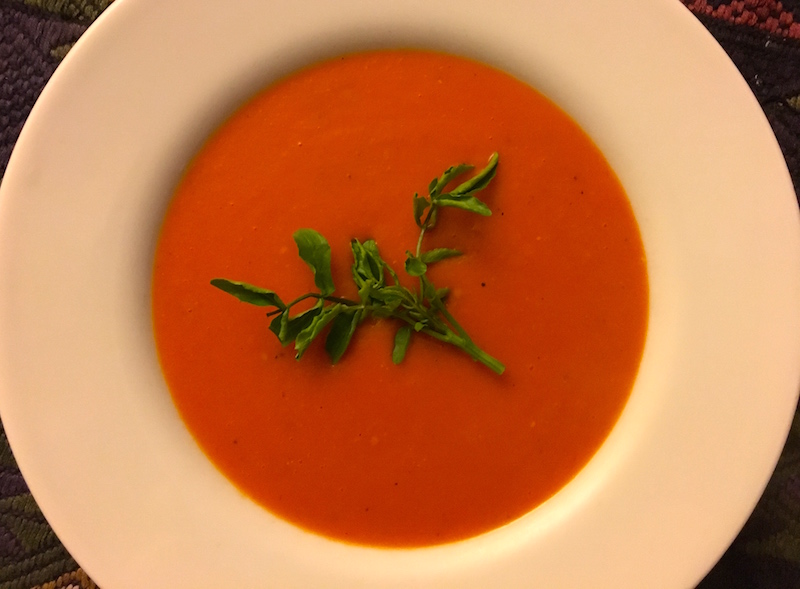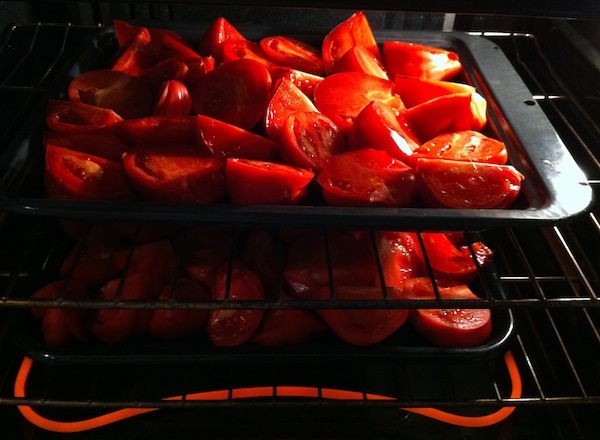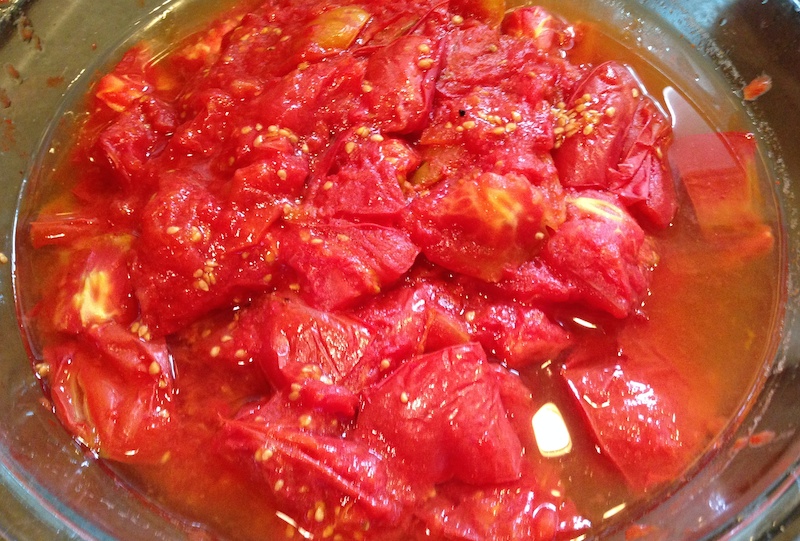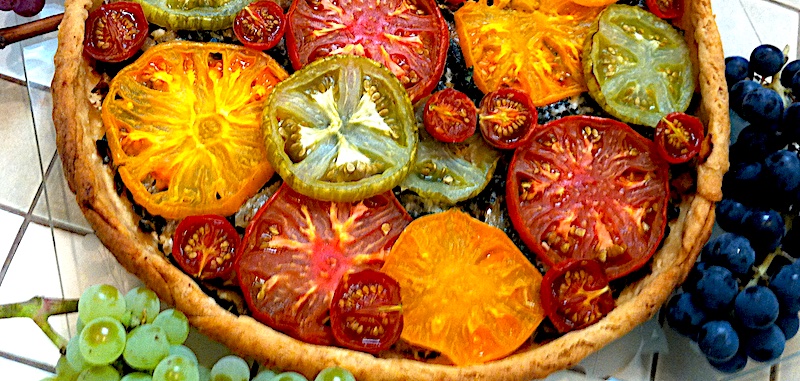
Luscious Late Summer Tomato Tart Worth Breaking the Rules For
My mother loved to entertain, and I remember many evenings as a child reluctantly trudging upstairs to bed, falling asleep to the sound of vehement discussions and accompanying laughter floating up to my darkened bedroom. One of her rules was that she never tried a new recipe out on her guests, preferring instead to stay with the tried and true.
Me, I think there's no better excuse to try something you've never made before than having folks over. I first tried out a new (to me) sauce called "pesto" on guests—it was a smashing success—and over the years there have been myriad salads, braised meats and desserts that were, for the most part, well received. Though I have to admit there were a (very) few that, how shall I put it, will never be spoken of, or made, again.
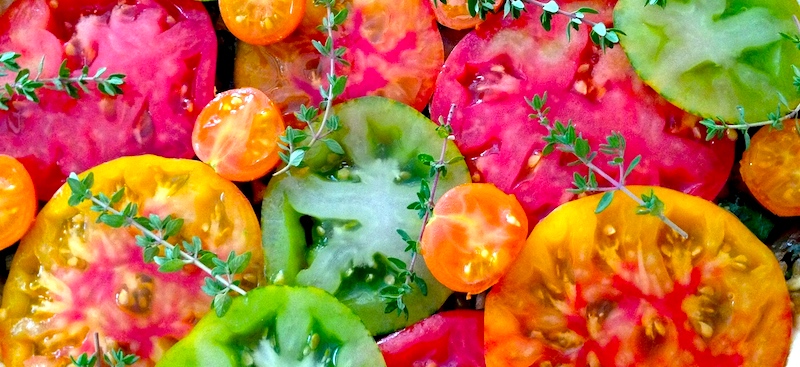
So when a friend invited us to bring an appetizer for dinner the other night, I mulled over the usual suspects…dips, wings, crostini/bruschetta, etc.…but nothing really clicked. Plus I really didn't want to make a trip to the store. So I looked around and took stock: tomatoes and kale from our weekly CSA, and onions, garlic and parmesan in the pantry. Then I remembered a photo of an amazing tomato tart I'd seen on the cover of a cookbook, and the deal, as they say, was sealed.
The book's version was made with all sizes and colors of tomatoes, so it fit perfectly with what I had on hand—though it would have been terrific with simple red tomatoes, too. The thin layer of sautéed kale and parmesan tucked underneath was just the right bass note for the bright acidic treble of the fresh tomatoes. And the dinner that night, with great food, wine and friends laughing and talking, was one my mother would have loved. Even if I broke one of her rules.
Tomato, Kale and Parmesan Tart
For the crust:
1 1/4 c. flour
1/2 tsp. salt
1/2 c. (1 stick) frozen margarine, cut into 1/2" pieces
2-3 Tbsp. ice water
For the filling:
1 Tbsp. olive oil
1/2 onion, chopped
3 cloves garlic, minced
4-6 leaves kale, sliced into chiffonade
1/2 c. parmesan, grated fine
3-4 tomatoes, sliced in 1/4" thick slices (cherry tomatoes can be halved)
Preheat oven to 375°.
Put flour and salt in the bowls of a food processor and pulse to combine. Add pieces of butter and pulse until the texture of cornmeal. With processor running, drizzle in water until it comes together in the bowl. (I usually use 2 1/2 Tbsp. and it comes together well without being too wet.) Remove from bowl, adding in any stray bits, wrap in plastic and refrigerate at least 1/2 hour.
Roll out dough on floured surface to make 12" round. Transfer to 9" diameter tart pan with removable bottom. Trim edges, leaving 3/4" overhang. Fold overhang in to form double-thick sides. Press tart edges to raise dough 1/8" above pan. Chill in refrigerator for 30 min.
Add olive oil to non-stick skillet and heat until oil shimmers. Add chopped onion and garlic and sauté until golden, stirring frequently to avoid browning. Add kale chiffonade and sauté until wilted. Remove from heat and set aside.
Line crust with foil and bake until golden, about 20 min. Remove from oven and cool slightly. Scatter kale mixture over the bottom of the crust, then sprinkle with parmesan. Top with single layer of tomatoes, arranging randomly. Place in oven and bake for 40 min. or until crust is browned and tomatoes are cooked through. Let cool slightly and remove outer ring. Slide off bottom onto serving platter. Serve warm or at room temperature. (And I hear the leftovers are great for breakfast the next day.)
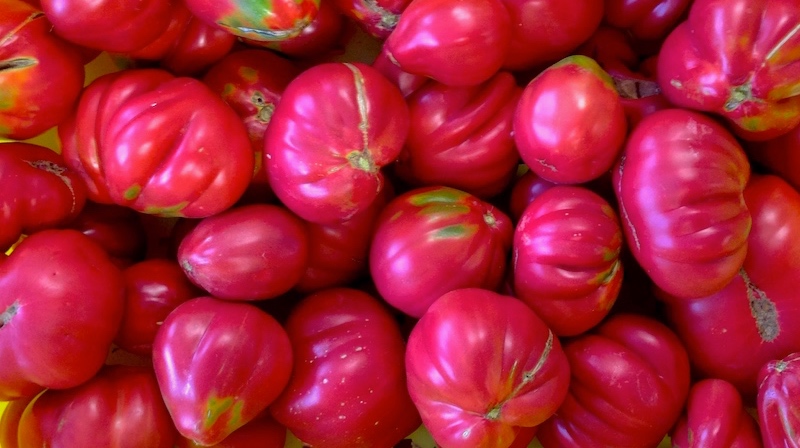
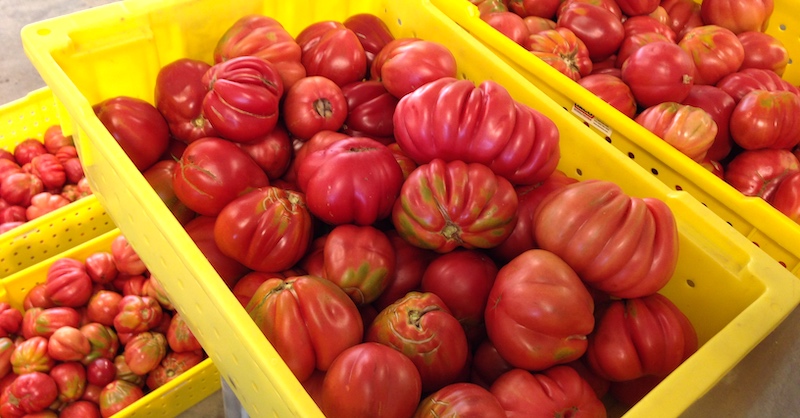
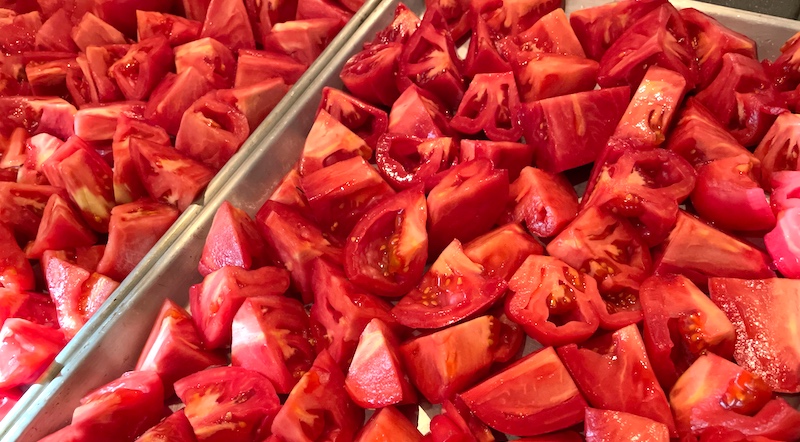

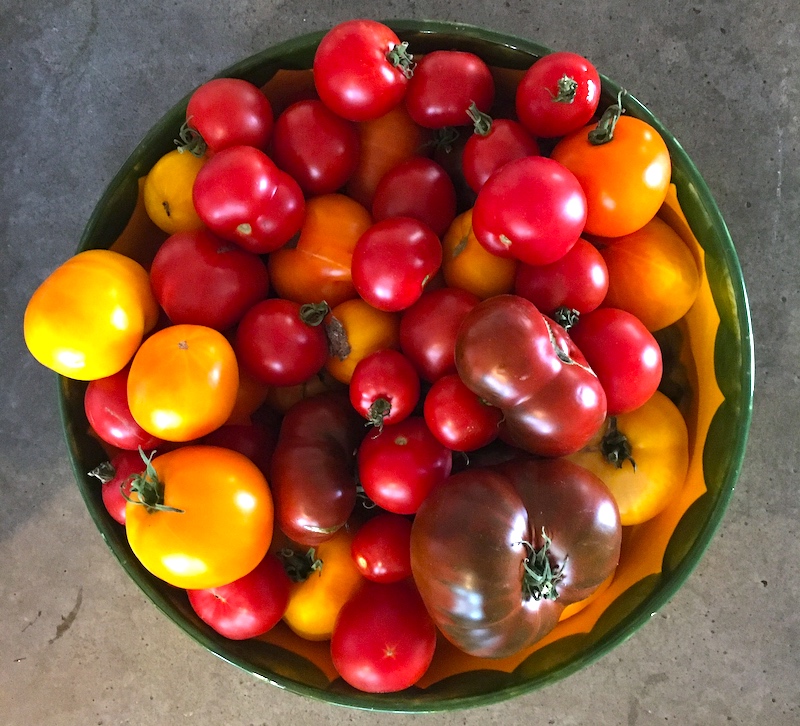
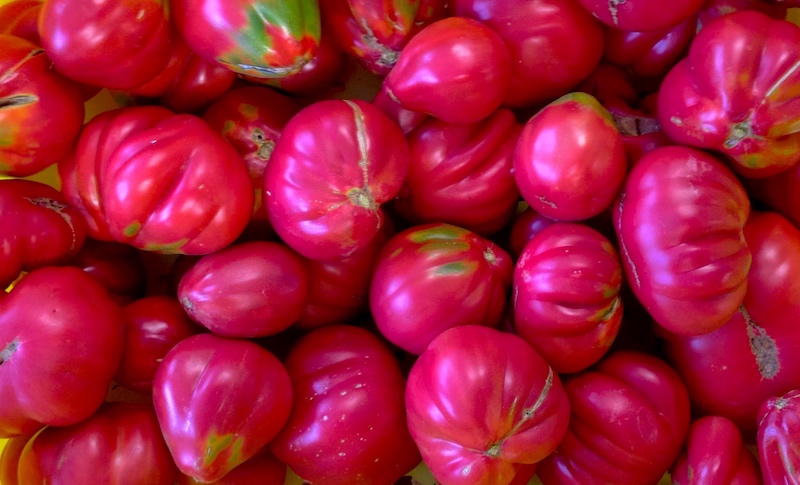
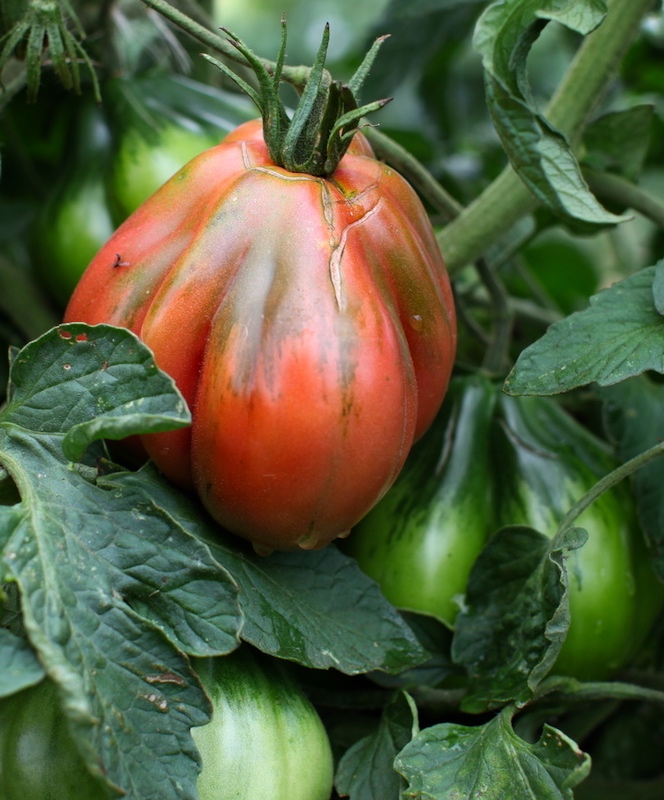
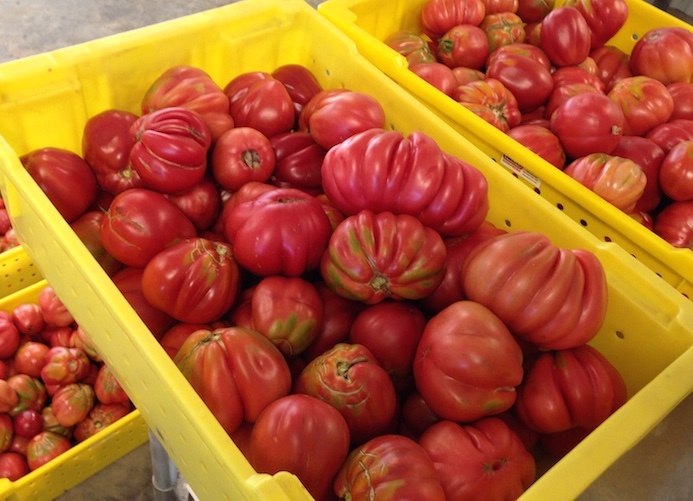
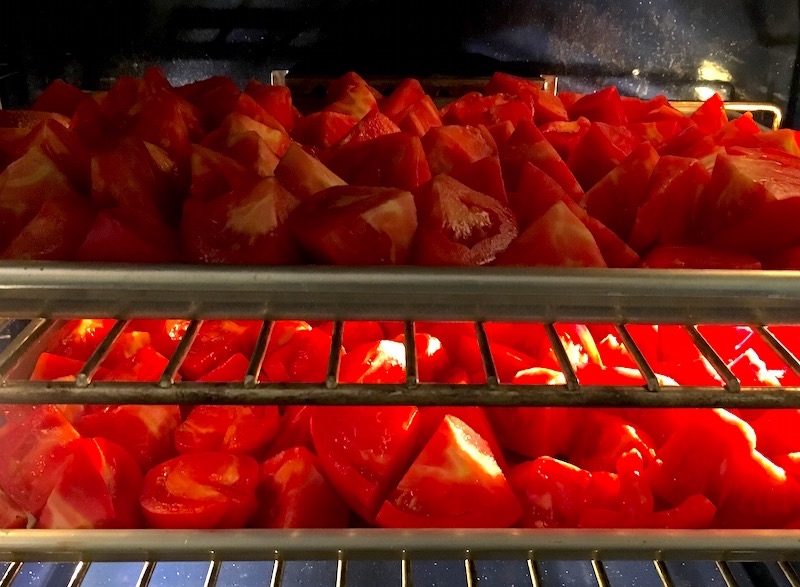 Preheat the oven to 400°, roughly chop the tomatoes into two-inch chunks, load onto two sheet trays skin-side down and roast for an hour. Cool enough to pull most of the skins off (most easily done by hand), load into quart freezer bags and you're done. If you want a sauce-like consistency, cool completely and run through a blender or food mill.
Preheat the oven to 400°, roughly chop the tomatoes into two-inch chunks, load onto two sheet trays skin-side down and roast for an hour. Cool enough to pull most of the skins off (most easily done by hand), load into quart freezer bags and you're done. If you want a sauce-like consistency, cool completely and run through a blender or food mill.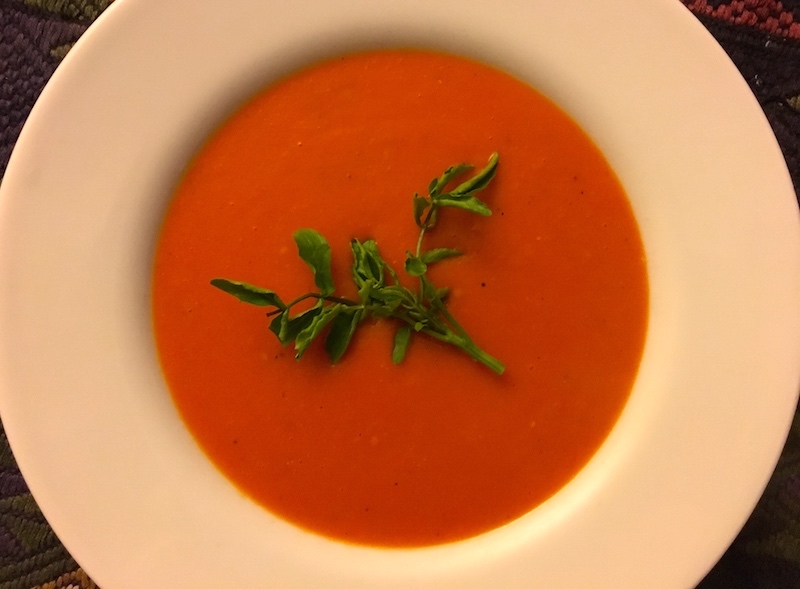 Here's a recipe for a fabulous tomato soup, one that I think rivals the best you're likely to find.
Here's a recipe for a fabulous tomato soup, one that I think rivals the best you're likely to find.